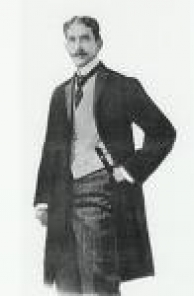4.4.1.1 The narrative work of Jesús Castellanos (1879 – 1912)

Jesús Castellanos was also a prominent narrator of the first decade of the Republic, amidst the ideological and aesthetic chaos of this period. Unlike other contemporaries who were already pointing toward an awareness of the nation’s subjugation to the United States, Castellanos considered this tutelage to be positive for economic development, and this is also evident in his narrative.
His two best-known works are “De tierra adentro” (From the Inside Out), 1906, and “La Conjura” (The Plot), 1909. The latter won him a prize at the Floral Games of the Ateneo de la Habana. However, during his final three years, he wrote several other works of value to national literary history, including the short novel “La manigua sentimental” (Sentimental Jungle), 1910, which reveals his ignorance of how the patriotic feat of 1895 unfolded and its significance.
“De tierra adentro” has a bucolic character, idealizing rural life, the landscape, and simplicity; but this was a form of escape from everyday city life and the conflicts it entailed, whose political matrix he wasn’t prepared to unravel. His style doesn’t go beyond the context of modernism, with its strong romantic overtones, and doesn’t delve much beyond the natural, where poverty, as Alberto Garrandés pointed out, only signifies humility and innocence.
For its part, “The Plot” breaks with the aforementioned worldview of romantic and modernist interweaving, to acquire frank realistic tones in the descriptions and approach to the characters, containing stories that propose and achieve marked shades of verisimilitude and also address moral issues closer to the sphere of cities, although not alien to the events of rural villages.
“The Heron,” written shortly afterward, constitutes Castellanos’s greatest achievement in his narrative forays, where the social trope prevails over the exhaustion of the landscape as a literary leitmotif. The events take place aboard a precarious vessel battered by a storm, which is used to draw the contrasting profiles of the wealthy and the dispossessed, the latter personified by a group of coal miners. The author might have pursued this thematic path had he not died so early.
The narrative work of Jesús Castellanos, despite the aforementioned biases regarding the erroneous perspective from which he viewed his national situation, nevertheless has the merit of revisiting the rural context and, with it, the criollo tradition of the previous century, which would provide a fresh foundation for subsequent narrative. Also notable are the literary ramifications of his strong personality in the field of ethics, where he advocated breaking with conventionalisms for the sake of human happiness, albeit still from an individualistic perspective.








